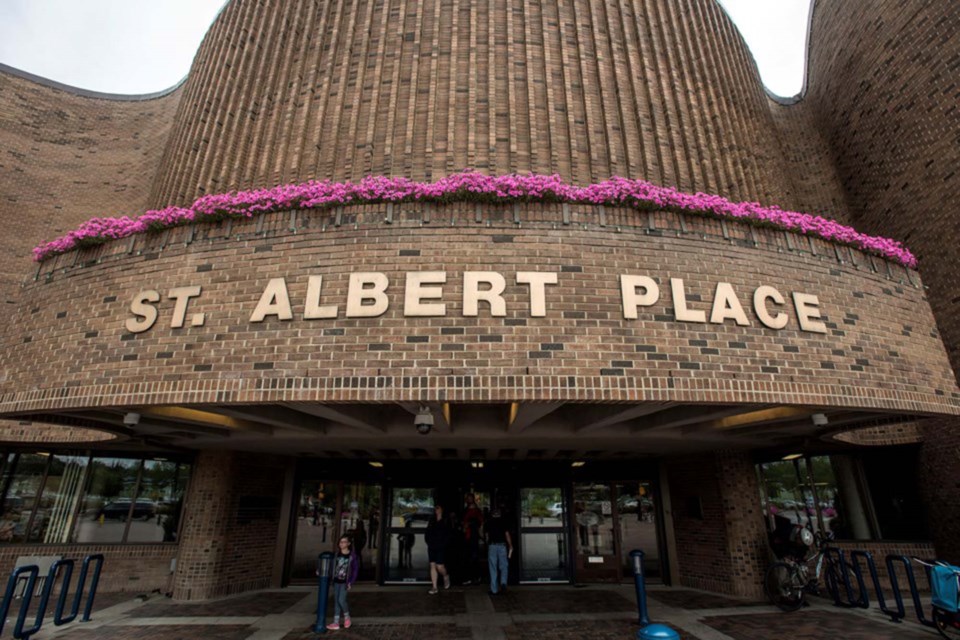While the City of St. Albert has carried a long-term goal of keeping residential taxes in check by expanding its non-residential tax base, how that growth is measured is a key factor in determining the city’s success, council members say.
During a May 16 council meeting, St. Albert city administration presented a wording change to the city’s municipal development plan (MDP). Part of a suite of changes to guide development in the annexation lands recently acquired from Sturgeon County, the switch looked to replace the term "tax revenue" with "tax assessment" in an existing MDP policy. The policy outlines St. Albert's goal to achieve a 70 per cent residential and 30 per cent non-residential tax ratio.
Lyndsay Francis, a senior planner with the city, said May 16 that swapping out St. Albert’s tax revenue goal for a tax assessment goal would lead to clarity within the MDP’s wording. The wording of the policy within the MDP outlines a goal to “strive to achieve a tax revenue split of 70 per cent residential assessment and 30 per cent non-residential assessment.”
Francis said the change would match the last part of the sentence to its beginning.
However, Mayor Cathy Heron highlighted that the change would impact how the city determines whether it has met its tax targets.
“Striking out of tax revenue is not a grammatical error,” Heron said. “That’s a huge change in how we calculate 70/30.”
Tax assessment vs revenue
Tax assessment is the total estimated value of residential and non-residential properties owned within St. Albert. Currently, St. Albert’s tax assessment is split at 84.6 per cent residential and 15.4 per cent non-residential.
When it comes to tax revenue, however, St. Albert’s ratio becomes a bit more favourable (the city brings in 79.3 per cent in residential tax revenue versus 20.7 per cent non-residential). This is because St. Albert’s non-residential tax rate is higher than its residential rate (the current total residential tax rate is 11.10329, while the non-residential rate is 16.13892).
The city met its long-term goal of an 80/20 tax split in the 2019 tax year, spokesperson Marci Ng said in an email. St. Albert has since expanded that goal to 70/30, with land in the city’s annexation area proposed for a 60/40 split to further weight the non-residential half of the ratio.
Coun. Sheena Hughes explained in an interview that if the city charged its residential and non-residential tax bases the same amount, whether it measured its tax split by assessment or revenue wouldn’t matter.
Under its current model, however, keeping its sights set on tax assessment would mean an 80/20 split is still out of reach.
“It’s harder to achieve the assessment than it is to achieve the revenue because we’re getting more in revenue than we are with just the sheer assessment,” Hughes said.
Heron said during the council meeting that St. Albert only achieved its tax-split goals after the city began focusing on reaching a tax revenue split. She explained that she had understood council had finalized the city’s goal to achieve a revenue split when it approved its new MDP in 2021, a goal she called “more achievable.”
“I thought we had finally uncomplicated it and now we’re going back,” Heron said.
If the city is seeking clarity in the wording of its MDP policy, Heron said it could change the latter part of the sentence wording from “assessment” to “revenue” to match the first part.
Heron was unavailable for an interview with The Gazette about the tax split.
Hughes said a question council still needs to examine more closely is whether it’s possible to achieve its tax-split goals and maintain them in the long term.
“What you want to have is a goal that is achievable and realistic,” Hughes said. “Otherwise, you’re just continuing to try to push something which does not seem to be working.”
Coun. Mike Killick said during the council meeting that he would need “several hours of time” before he’d be ready to approve the switch to tax-assessment wording.
During the meeting, council voted to postpone any MDP amendments spurred by the annexation lands — including changing the existing MDP's wording to tax assessment. Council voted to discuss the amendments during a special council meeting or committee of the whole meeting before the proposed change returns to council.




